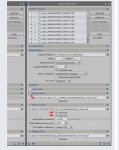Hi all,
In the IC Tool, could someone please explain the difference between:
Putting a cross in Master Bias and selecting a master bias file but not entering a cross in Calibration
or
Putting a cross in Master Bias and selecting a master bias file and entering a cross in Calibration
I understand that calibrating images with the bias is to subtract them but I’m trying to understand what happens if I don’t select calibration, if that makes sense.
In the IC Tool, could someone please explain the difference between:
Putting a cross in Master Bias and selecting a master bias file but not entering a cross in Calibration
or
Putting a cross in Master Bias and selecting a master bias file and entering a cross in Calibration
I understand that calibrating images with the bias is to subtract them but I’m trying to understand what happens if I don’t select calibration, if that makes sense.

